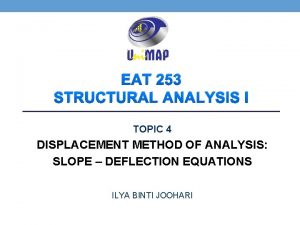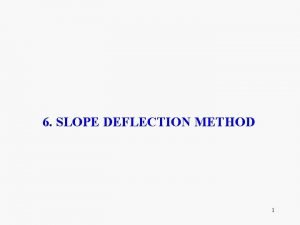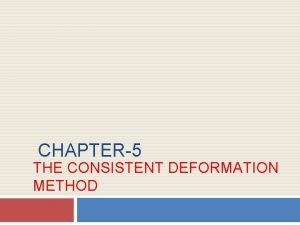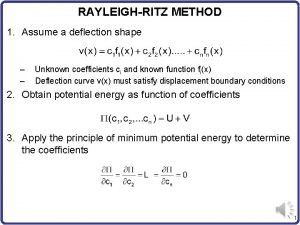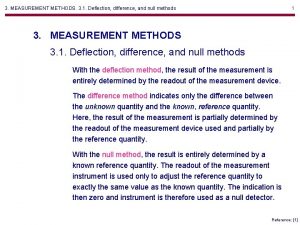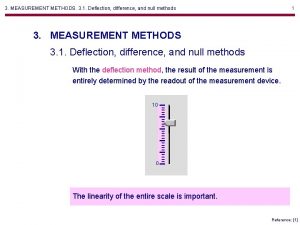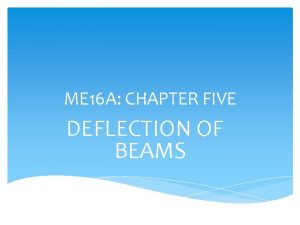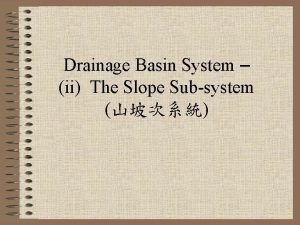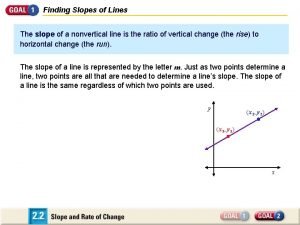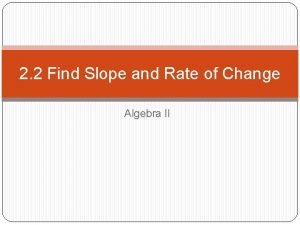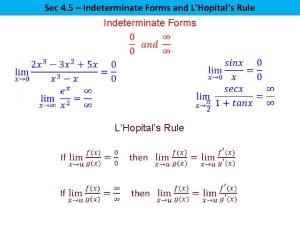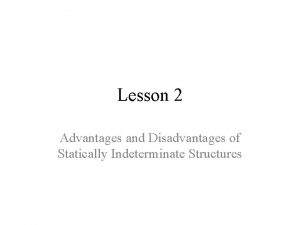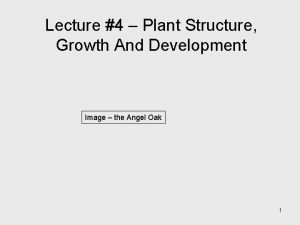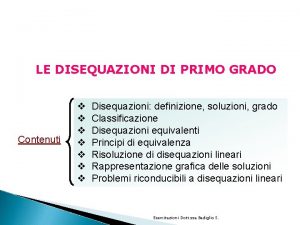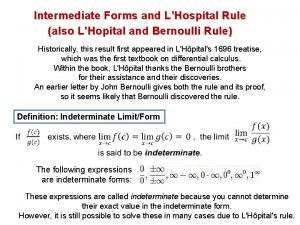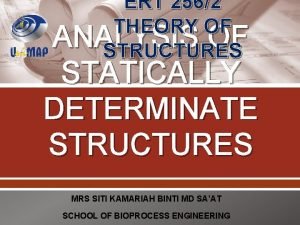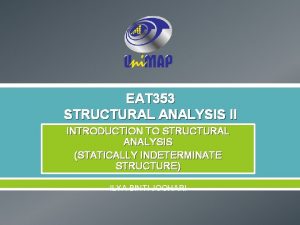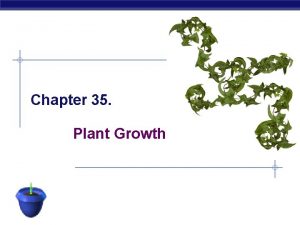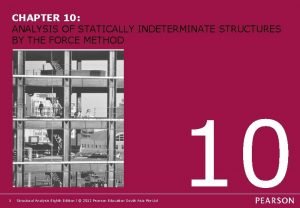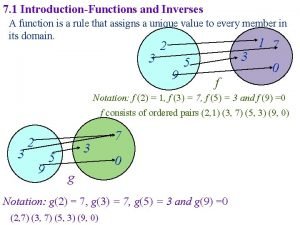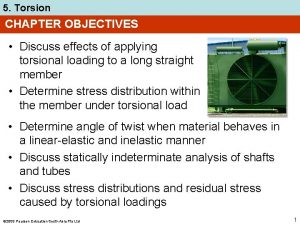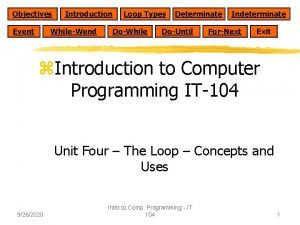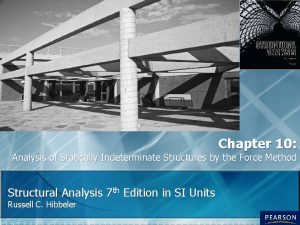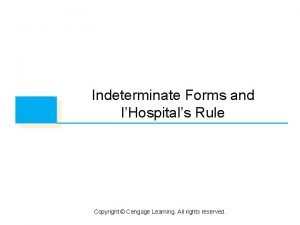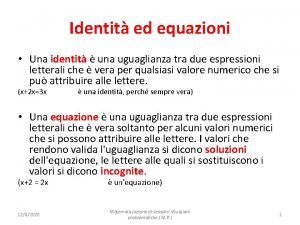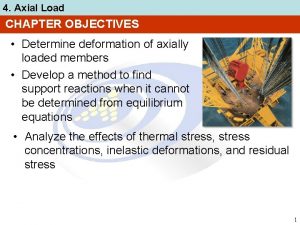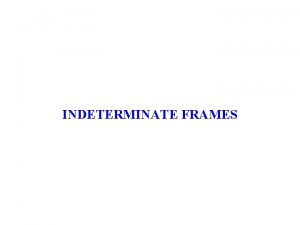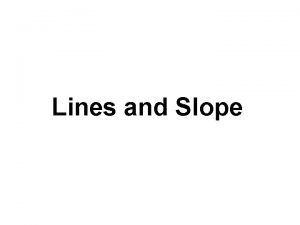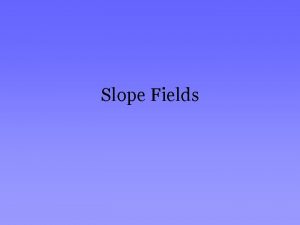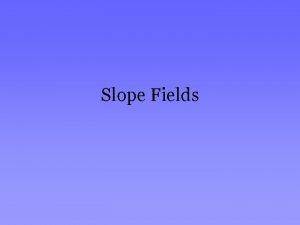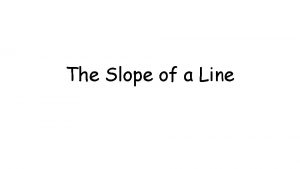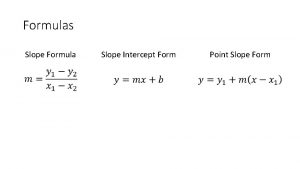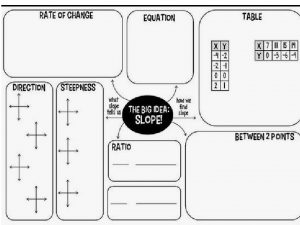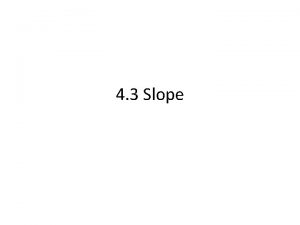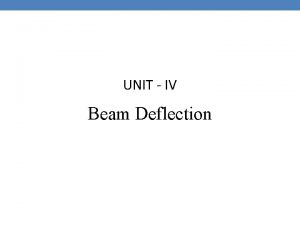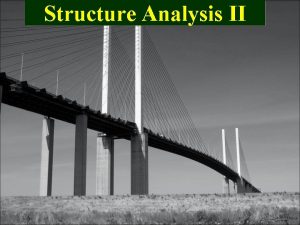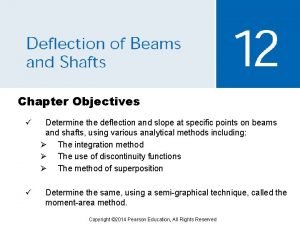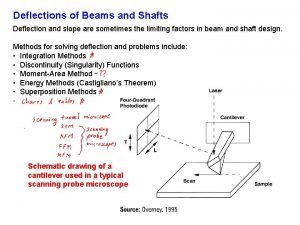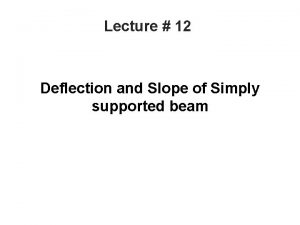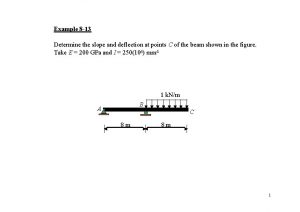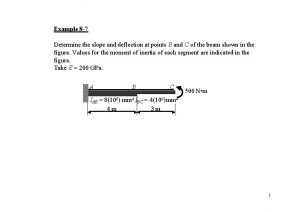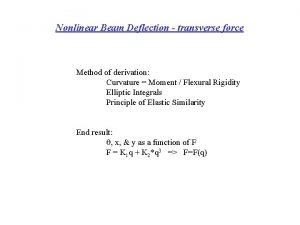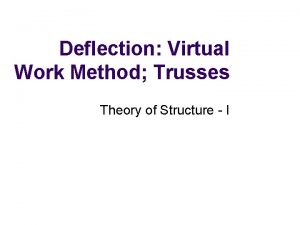Slope Deflection Method for the Analysis of Indeterminate

































- Slides: 33

Slope Deflection Method for the Analysis of Indeterminate beams By Assist Lect. Lubna Mohammed Abd

All structures must satisfy: Load-displacement relationship n Equilibrium of forces n Compatibility of displacements n

Using the principle of superposition by considering separately the moments developed at each support of a typical prismatic beam (AB) shown in Fig. 1(a) of a continuous beam, due to each of the displacements , , and the applied loads. Assume clockwise moments are +ive.


1. Assume ends A and B are fixed, i. , e. , the rotations. This means that we have to apply counterclockwise moment at end A and clockwise moment at end B due to the applied loads to cause zero rotation at each of ends A and B. Table (1) gives for different loading conditions.

Table (1)

2. Release end A against rotation at end A (rotates to its final position ) by applying clockwise moment while far end node B is held fixed as shown in Fig. 1. 3. Now, the clockwise moment - rotation relationship is:

4. The carry over moment at end B is: 5. In a similar manner, if end B of the beam rotates to its final position , while end A is held fixed. The clockwise moment – rotation relationship is:

6. The carry over moment at end A is: 7. If node B is displaced relative to as shown in Fig. (1), so that the cord of the member rotates clockwise i. , e. , positive displacement and yet both ends do not rotate, then equal but anticlockwise moments are developed in the member as shown in the figure.

Slope-Deflection Equation Load-displacement relationship If the end moments due to each displacement and the loading are added together, the resultant moments at the ends may then be written as:

For prismatic beam element, equation (1) may be written as:

The slope deflection equations (1 or 2) relate the unknown moments applied to the nodes to the displacements of the nodes for any span of the structure. To summarize application of the slopedeflection equations, consider the continuous beam shown in Fig. (2) which has four degrees of freedom. Now equation (2) can be applied to each of the three spans.

Fig. (2)


From Fig. (2): Equilibrium conditions Compatibility conditions


n n n These equations would involve the four unknown rotations. Solving for these four unknown rotations. It may be noted that there is no relative deflection between the supports, so that The values of the obtained rotations may then be substituted in to the slope deflection equations to determine the internal moments at the ends of each member. If any of the results are negative, they indicate counterclockwise rotation.

Example (1) Solution 1. Draw the shear and moment diagrams for the beam shown in Fig. (3). EI is constant. Using the formulas for the tabulated in Table (1) for the given loadings:

Fig. (3)

2. There are two slopes at B and C, i. , e. , are unknowns. Since end A is fixed, Also, since the supports do not settle, nor are they displaced up or down

Now, by applying the equilibrium conditions:

Substituting the computed values in to moment equations (a), (b), (c), and (d):

By considering the values of support moments and the applied loads, the support reactions may then be determined: RA = 8. 3625 k. N RB = 10. 2042 k. N RC = 1. 8333 k. N Shearing force and bending moment digrams are shown in Fig. (4).

Fig. (4) Shearing Force & Bending Moment Digrams

Example (2) Determine the internal moments at the supports of the beam shown in Fig. (5). The support at B is displaced (settles) 12 mm.

Solution 1. Two spans must be considered. FEMs are determined using Table (1).

2. Using equation 2:

3. Equilibrium condition:

n In order to obtained the rotations equations (n) & (p) may then be solved simultaneously, it may be noted that since A is fixed support. Thus, Substituting these values into equations (i to l) yields

Example (3) If end A in example (1) is simply supported, and by applying the compatibility condition, their will be three unknown rotations, Now,

Applying the equilibrium conditions:

By solving equations (1, 2 & 3) for and substitute the values into equations (a, b, c, d):

Shearing force and bending moment diagrams are shown in the following figure.
 Slope-deflection equations
Slope-deflection equations Structural analysis
Structural analysis Slope deflection method derivation
Slope deflection method derivation Consistent deformation method for indeterminate frames
Consistent deformation method for indeterminate frames Rayleigh ritz method cantilever beam example
Rayleigh ritz method cantilever beam example Null difference method
Null difference method Null deflection method
Null deflection method Deflection of beams macaulay's method
Deflection of beams macaulay's method Difference between slope decline and slope retreat
Difference between slope decline and slope retreat Point-slope form definition geometry
Point-slope form definition geometry Slope review classifying slope
Slope review classifying slope Slope review classifying slope
Slope review classifying slope A building bent deflect in the way same as a
A building bent deflect in the way same as a Lhopital rule
Lhopital rule Advantages of indeterminate structures
Advantages of indeterminate structures Indeterminate growth
Indeterminate growth Disequazioni indeterminate
Disequazioni indeterminate Lhospital rule
Lhospital rule Statically determinate and indeterminate structures
Statically determinate and indeterminate structures Determinate and indeterminate structure
Determinate and indeterminate structure Apical meristem
Apical meristem Statically determinate and indeterminate structures
Statically determinate and indeterminate structures Types of indeterminate forms
Types of indeterminate forms Derivative of inverse trig functions
Derivative of inverse trig functions Statically indeterminate torque loaded members
Statically indeterminate torque loaded members Determinate and indeterminate loop in vb
Determinate and indeterminate loop in vb Advantages and disadvantages of indeterminate structures
Advantages and disadvantages of indeterminate structures Saint venant principle
Saint venant principle What are the 7 indeterminate forms?
What are the 7 indeterminate forms? Due equazioni indeterminate sono sempre equivalenti
Due equazioni indeterminate sono sempre equivalenti Statically indeterminate
Statically indeterminate What are the 7 indeterminate forms?
What are the 7 indeterminate forms? St venant principle
St venant principle Indeterminate premium whole life policy
Indeterminate premium whole life policy

